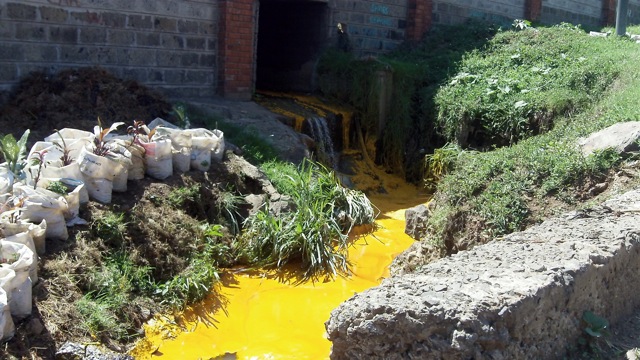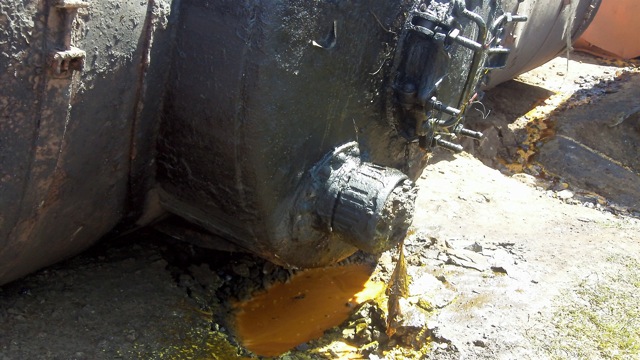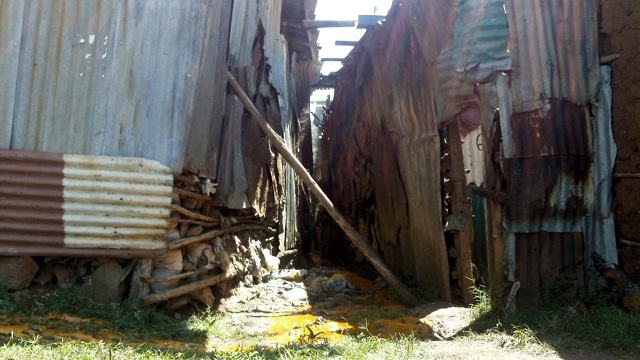Kenya Hear Me
 It’s 4:30 am in Kibera, and a train had fallen off the tracks.
While trains have fallen in Kibera many times before, this was strange – like something out of a comic book. Along with 15 downed train carts was neon orange goo dripping out of a cylindrical black tank. As a construction team in yellow vests attempted to clean up the mess, a man, not in uniform or working gear, called out to me and demanded to know what I was doing there. After showing my document declaring that I was an official researcher for the Kenyan government, this man demanded that I delete from my camera all the pictures that I had taken of the wreckage.
It’s 4:30 am in Kibera, and a train had fallen off the tracks.
While trains have fallen in Kibera many times before, this was strange – like something out of a comic book. Along with 15 downed train carts was neon orange goo dripping out of a cylindrical black tank. As a construction team in yellow vests attempted to clean up the mess, a man, not in uniform or working gear, called out to me and demanded to know what I was doing there. After showing my document declaring that I was an official researcher for the Kenyan government, this man demanded that I delete from my camera all the pictures that I had taken of the wreckage.
Much quarreling ensued before I ultimately said to him, “You don't own this land – I can take pictures here if I want," as I pointed to all the onlookers, many of whom had just lost their homes. He replied by informing me that Kenya Railways and the Kenyan government owns this land, and that I and the surrounding crowd were “encroachers," adding that all were "supposed to be 50 meters back."
I asked the man who he was, and he claimed he was in charge of this particular section of the railway for Kenyan railways. Figuring that my standing with this man could not get any worse, I asked about the orange goo. Upon hearing this question, the man explained that he could not answer any more questions and instructed me to delete my photos and leave the premises immediately. As I left, I took a different route along the highway. Through a hill was big drain pipe, pouring the same orange muck into Kibera.
The next day, I showed these pictures to a professor at Nairobi University, who wished to remain anonymous. The professor said this orange viscous liquid was definitely a type of toxic waste and added, "This wasn’t on the news at all because the train station knows how dangerous this kind of stuff is. Had the wreck been anywhere in Nairobi except Kibera, Kenyan railway would be under fire for this."
As an outsider, this seems like a really interesting time in Kenya's history. In the past years, there was the controversial implementation of a new constitution, a trial at the Hague of well-known politicians for violence after the 2007 election, and the deterioration of the Kenyan shilling along with extreme inflation as a result – to only name a few.
With all of these issues, the government is very swift at keeping everything locked under a lid – whether by dissuading strikers, producing evidence suggesting enough innocence to quell suspicions, or restricting journalists from a train wreck. However, the consequences of that night are far-reaching – not only are many homes and stores destroyed, but there is also a good chance that the leaked chemicals polluted Nairobi’s drains and water supplies. Despite the devastating consequences this train wreck and toxic spill had on people's lives, it was not even a blip on the Kenyan media radar. In this comic book mischief of vibrant orange toxins in the night, it seems that the bad guys have escaped unscathed.




